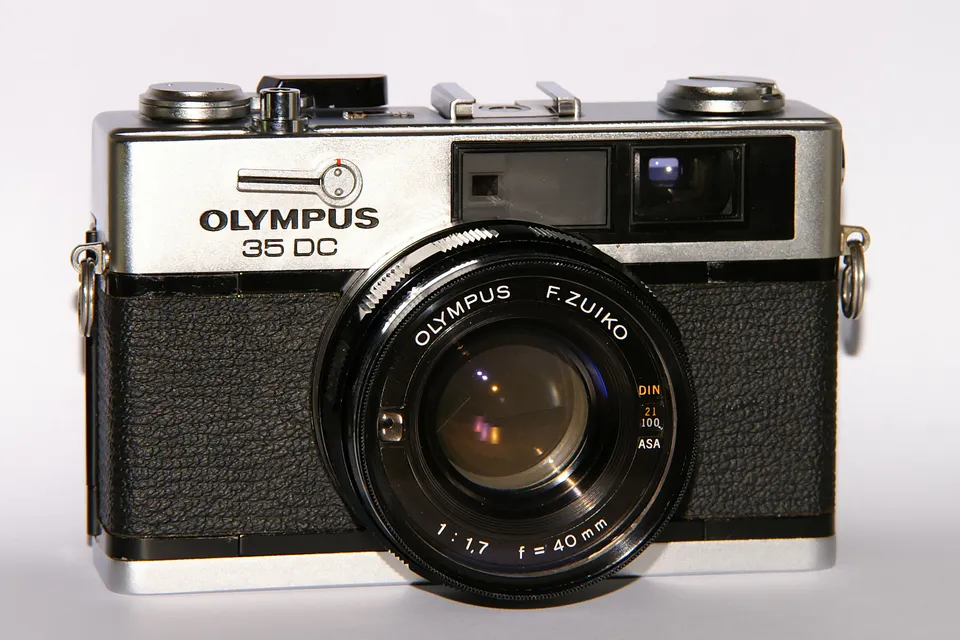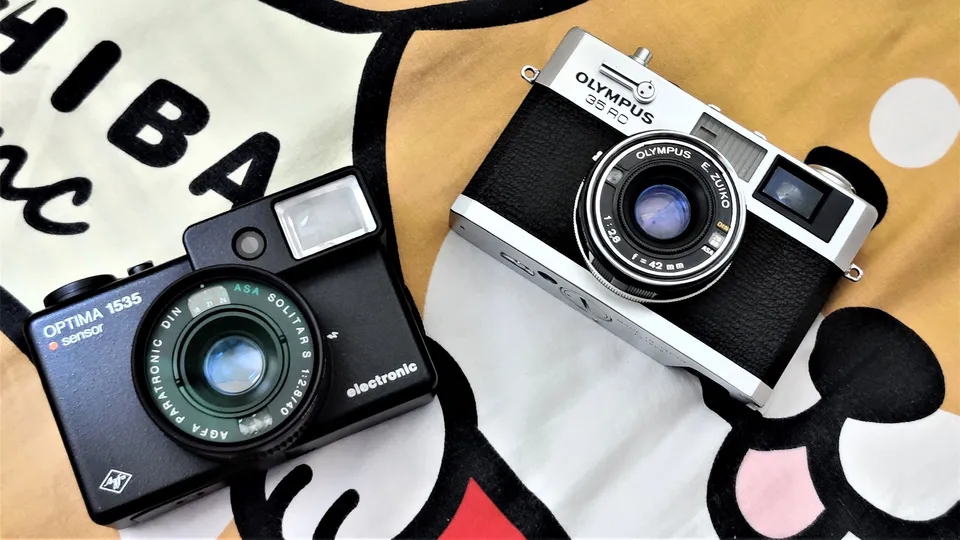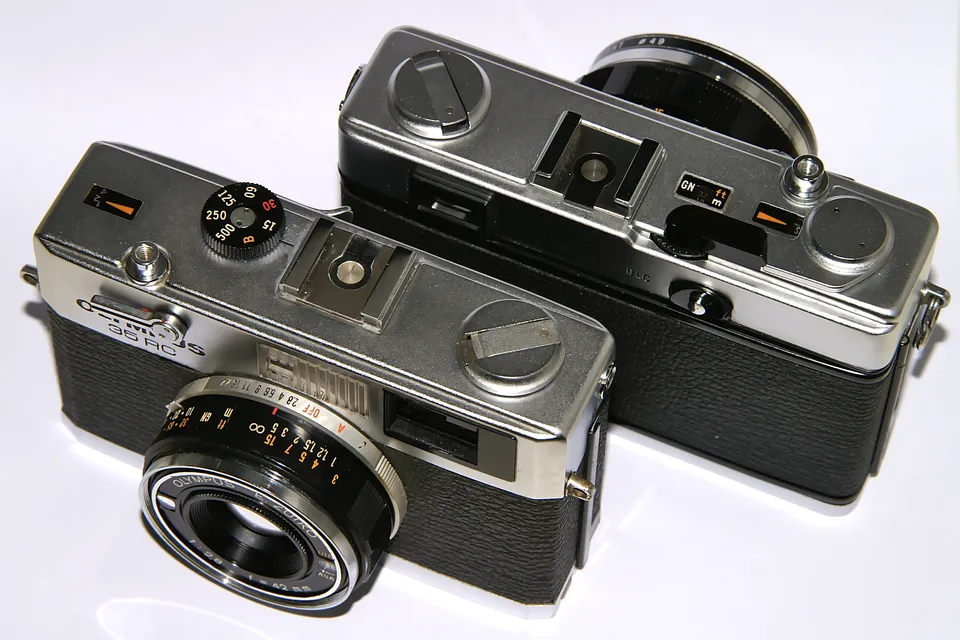Olympus 35DC

| Feature | Agfa Optima 1535 | Olympus 35RC | Olympus 35DC |
|---|---|---|---|
| Lens | Solitar S f/2.8 | E.Zuiko f/2.8 | F.Zuiko f/1.7 lens |
| Shutter | Electronic | Mechanical | Electronic |
| Automatic Mode | Fully automatic | Shutter priority & Full manual | Fully automatic |
I really wanted to know. Between Agfa Optima 1535, Olympus 35RC and Olympus 35DC, which has the best image quality, portability, and versatility. Olympus 35DC is the last one that I acquired out of the three. I am particularly interested in how 35DC performs in the image quality department with its supposedly superior F.Zuiko f/1.7 lens.
Full mechanical or Automatic?
Before diving into the specific of this camera, I want to mention a recent change in my view on fully mechanical vs automatic camera. Originally I consider automatic cameras inferior to mechanical. Automatic cameras cannot be repaired once broken due to lack of parts and expertise. Yet it's actually the same in case of a mechanical camera.
From a usability point of view, letting the camera decide the exposure is much smoother than having to adjust exposure and focus at the same time, while the "decisive moment" silently slip away. Plus people have an attention span ≤ 3 seconds and even shorter smile before their face muscles twitch.
As such, I choose to ignore the repairability factor when comparing these three cameras. However a fully mechanical mode is still very welcome especially when I look at versatility of the camera. More on that later.
Portability
Let's first address the elephant in the room. Olympus 35DC is definitely bigger than both 35RC and Optima 1535, while the latter two are of similar form factor. 35DC's bigger F.Zuiko f/1.7 lens also pokes out more than the E.Zuiko lens of 35RC and use a bigger 49mm filter size.


When it comes to portability it's not just about the camera size though. In fact, I consider 35DC as portable as the 35RC and for one reason, Optimat 1535 is falling way behind them…
I really need those strap lugs!
Because of the unconventional mounting screw placement and lack of strap lugs, Optimat 1535 feels weird to carry no matter where I put the strap. As long as 35DC can fit into my pocket or hang stably from my shoulder with straps, I don't find it any less portable than the 35RC.

Image Quality
The image quality of Olympus 35DC is…well sharp, as sharp as the 35RC. But then I don't know, it's not much better than Optima 1535.
For a Tessar, Optima 1535 doesn't suffer from soft edges issue like KMZ Moskva-5. Without that edge sharpness issue on Optima 1535's side, 35RC and 35DC are only ahead by very little margin in the sharpness department.
What about that monstrous bokeh that 35DC's f/1.7 lens could potentially deliver? Being a fully automatic camera, I can't find a suitable lighting scenario to persuade the camera to expose at that particular aperture setting. When light is low, more often than not the camera locks up the shutter refusing to take a photo!
At this point I don't know, maybe all three cameras are just as capable of producing good image for normal use cases.



Versatility
Olympus 35DC is designed to use 1.3V mercury battery just like the other two cameras and many others in its era. However my copy of 35DC works just fine with a 1.5V LR44 battery put in. Without compensating for this voltage difference via ISO setting, the exposure parameters shown in the viewfinder by the camera matches precisely with my phone's light meter.
A possible cause may be the LR44 battery is nearly used up, causing a voltage drop in its output, or that my copy had been modified to accept 1.5V battery. Anyway, I was pleased not having to adjust ISO setting to compensate for sensitivity difference.
On a bright sunny day there's absolutely no problem using the Olympus 35DC, pleasantly, even. However when going indoor and during evening or night time, this camera is absolutely because the shutter locks up, refusing to take a shot.
For the layperson this camera was designed for, this is probably a good feature, but I guess Olympus was too lazy to provide an override, or they wanted to reserve this feature to a superior model, the Olympus RD.
In low light situation I could do 2 things:
- Use a flash
- Give up
There is an override button at the bottom but all it does is lock the exposure parameter at f/8 and 1/125s, which is totally missing the point. There is at least one person suffering from the same issue so it's not just my copy having this issue.
Update 2023-07-28
After consulting the manual, the shutter release lock override button is intended for loading film and advancing the first 2 shots in dark environment, therefore it's not expected that those 2 shots end up with any image. Use flash or give up in low light environment.
Ok, user can also adjust the ISO setting to trick the camera into thinking there's enough light to shoot at f/1.7 and 1/15s. What's the point though? The photo opportunity would have been gone. All potential to the f/1.7 maximum aperture has been lost due to this design flaw.
This however is not an issue on 35RC or Optima 1535 because 35RC has manual mode and Optima 1535's shutter goes all the way up to 15 seconds. As 35DC is using an electronic shutter, it is just lazy for them to stick to the old mechanical needle-based metering system dating back to the first Olympus PEN that forbids shutter speed slower than 1/15s, voiding the whole point of having a large aperture lens.
Verdict
In bright daylight all of these 3 cameras are capable of producing good image. Perhaps more so on the Olympus 35DC as its lens is at least superior by design.
The Olympus brothers have the advantage of a reasonable strap lug and tripod mount placement, making them more portable than the Optima 1535.
The most usable is perhaps my Olympus 35RC, with both manual and automatic mode and a lens producing good enough images even with a big ass fingerprint on its middle element and slight coating degredation on its front element.
Lastly, a honorable mention to the sexiest shutter sound of Optima 1535.
The merits of both Olympus 35DC and 35RC were combined into the very rare Olympus 35RD, which is asking for a price similar to Optima 1535 if not more in the second hand market. But no, it won't make me a happier person acquiring an Olympus 35RD…
Unless I can get one for less than ¥20,000…
